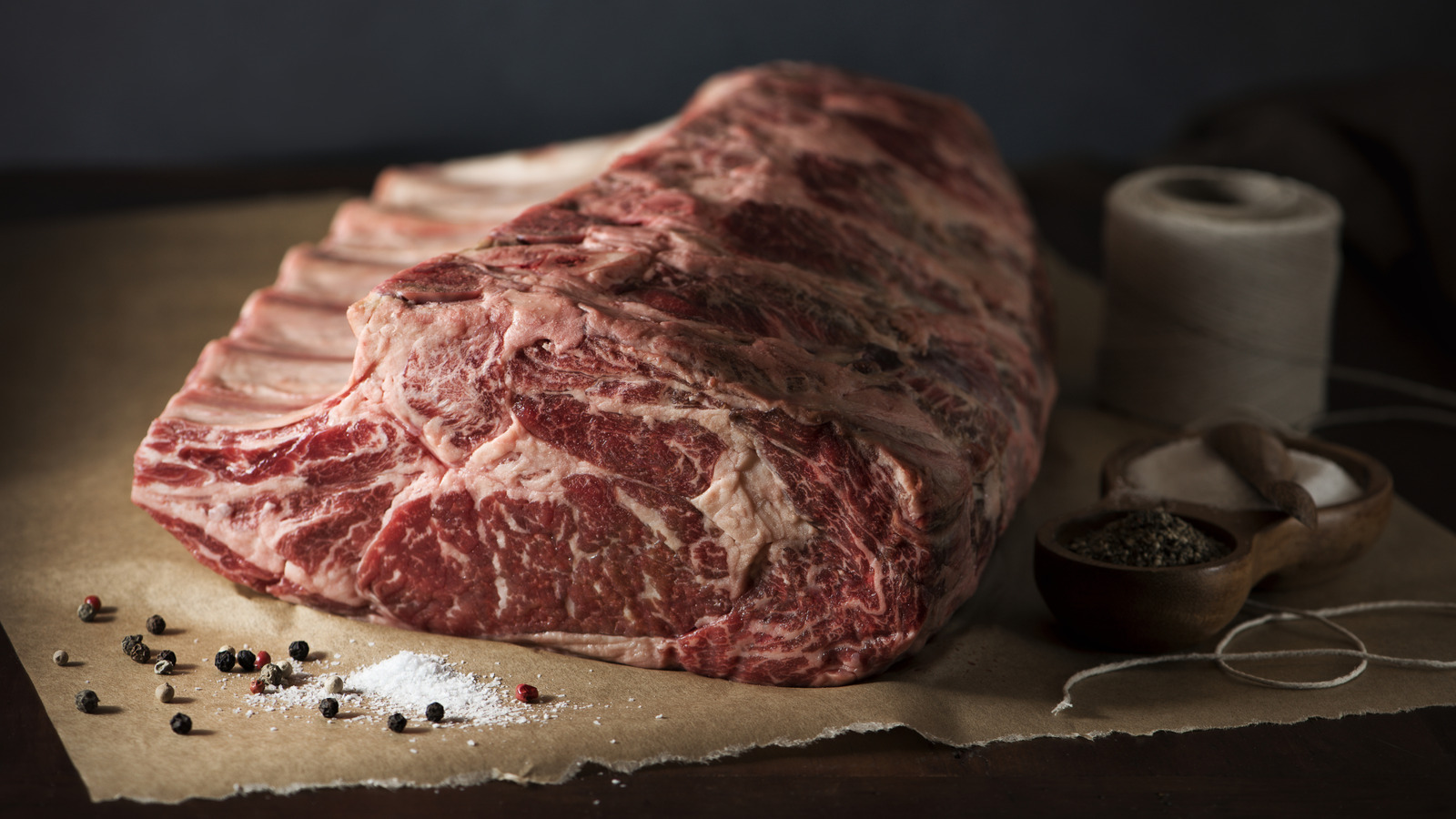A ribeye is one of the most popular cuts of steak, and one that even overcooking rarely ruins. You may be used to ordering ribeye steaks at your favorite restaurant, or buying the steaks already pre-cut, but for a more economical option, you can cut your own ribeye steaks, assuming you can get an entire prime rib, have a sharp knife, a large enough freezer, and enough space in which to work. We spoke with chef Matthew Stowe, “Top Chef Canada” winner and executive chef of JOEY Restaurants — which recently opened its latest location, JOEY Valley Fair, in Santa Clara — on how to turn a prime rib into ribeye steaks.
According to Stowe, “If you’re buying a whole prime rib, you’re probably going to get 14 to 16 nice sized steaks.” Each steak should be between 1-1½ inches thick. For easier cutting, you’ll want to work with very chilled though not completely frozen meat. “It’s easiest to cut the meat when it’s super chilled because that way, the fat is firmer, and you’ll be able to get a nice clean slice and it won’t wiggle around as much,” Stowe explained. For the cleanest cuts, he recommends taking your time, using a long and sharp knife, and keeping your elbows tucked right into the sides of your body so that your arms are “forced to go up and down pretty evenly.”
How to store and cook the ribeye steaks
If you can’t use up all 15 or so ribeye steaks at once, then it’s best to freeze the raw meat to use later, chef Stowe adds. If you know you plan to use all of the meat as steaks, then go ahead and cut them into ribeye steaks before freezing. If you’re not sure and you may want to cook a rib roast, for example, it may be better to keep the remainder of the meat intact before freezing. Either way, place the rest of the prime rib or ribeye steaks in a Ziploc freezer bag and squeeze out as much of the excess air as possible before storing them in the freezer — properly wrapped steak will last for up to a year in the freezer. What you don’t want to do is freeze the cooked steaks. Stowe says, “Typically, they’re not going to defrost very well. They’ll get quite dried out and, oftentimes, the meat that you’re buying has already been frozen as well, so you don’t want to necessarily freeze it again and again.”
As for cooking the ribeye steaks, Stowe recommends letting them temper (or come up to room temperature) before cooking. “So you can get a nice even cook on it,” he explains. Pan sear the steaks in a cast iron skillet or use a grill for a chef-approved method for cooking a perfect ribeye steak at home, and be sure to use all of the tips you can to get the perfect sear on your ribeye steak.






